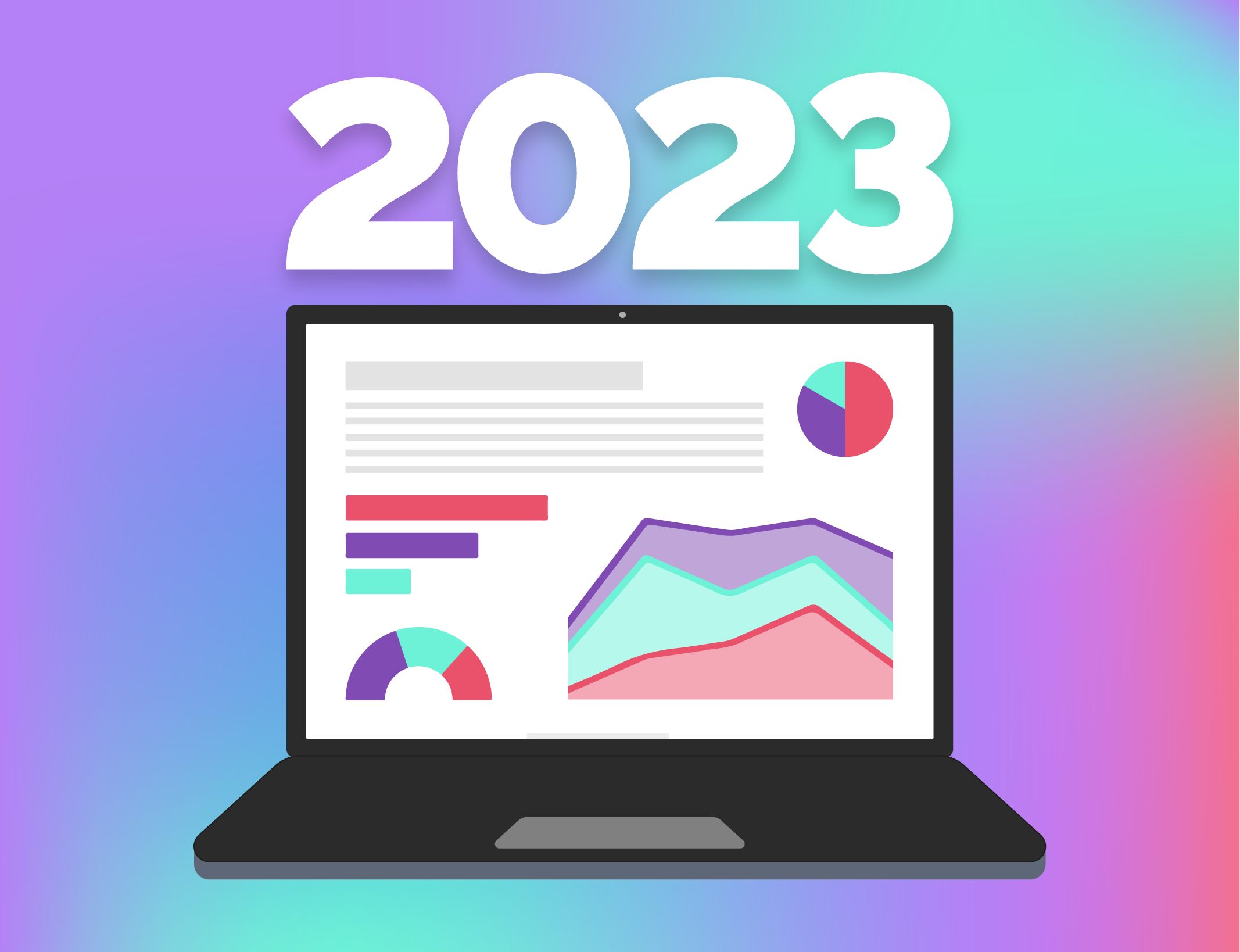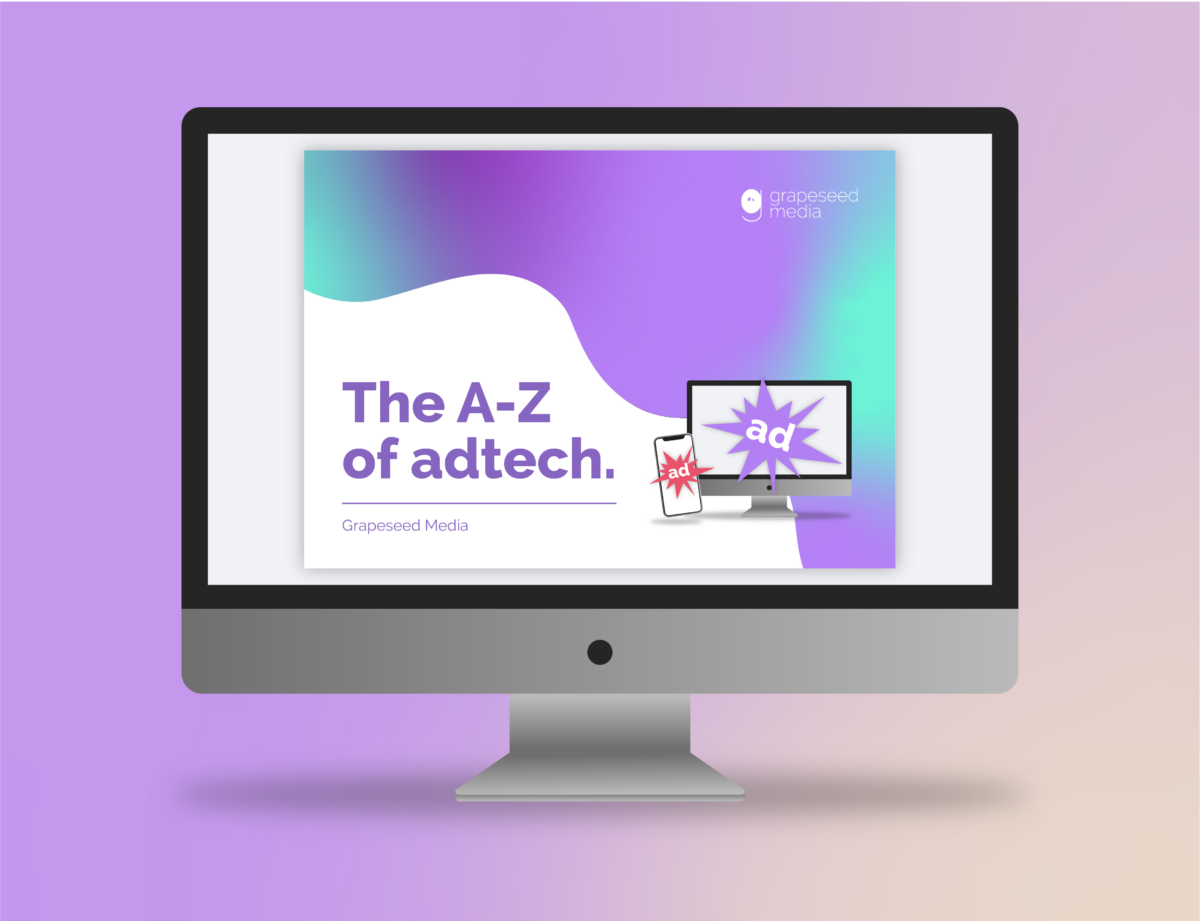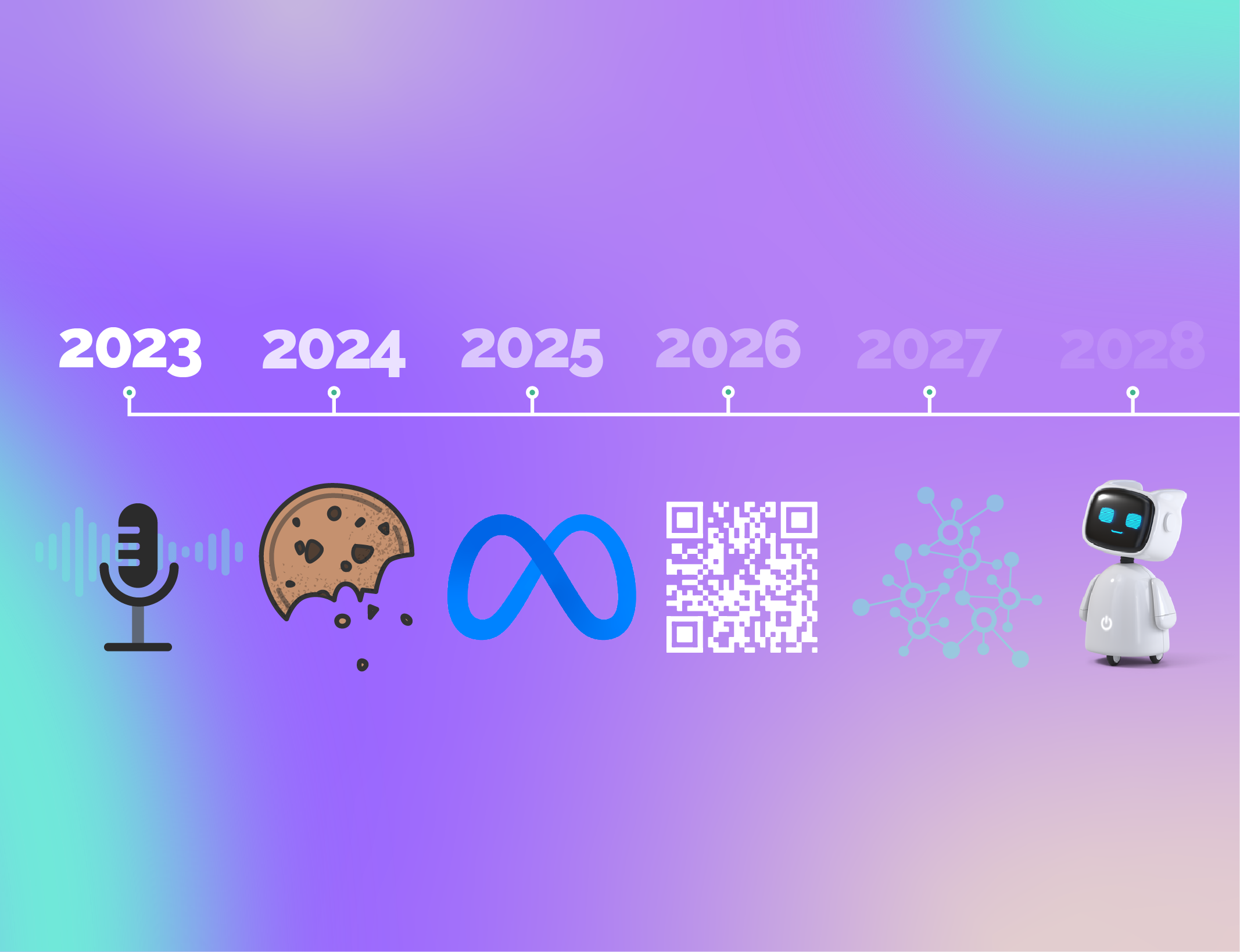The digital advertising industry is constantly evolving, and 2023 is shaping up to usher in some new digital marketing trends.
While no one can say with certainty what the future of advertising holds — just look at how 2020 changed the face of marketing forever — early adopters of these new trends and technologies will gain an advantage over their competitors.
If you’re looking to align your 2023 advertising strategies with industry trends, read on. This article will cover five of the hottest advertising trends marketers will need to tap into in 2023 and beyond.
1. First, Second, and Zero-Party Data Solutions
The cookieless future is coming, which means an end to the third-party data collection that advertisers have relied on for decades.
New privacy legislation, such as Europe’s General Data Protection Regulation (GDPR)and the California Privacy Act (CCPA) of 2018, has made it more challenging to use tracking cookies to target and modify ads based on online user behavior. Additionally, users have become increasingly concerned about data privacy.
As a result, Firefox, Apple, and Google all announced they’re ending third-party cookie support, leaving advertisers looking for new ways to collect the valuable customer data that drives their campaigns.
Instead of third-party data, advertisers will need to find ways to source first, second, and zero-party data. To successfully leverage this data, you’ll need to understand the differences between the three.
First-Party Data
First-party data is the data a business collects on its customers and their behavior. This might include demographics, purchase history, customer support, website activity, email engagement, interests, and other behaviors.
Second-Party Data
Second-party data is data collected by a trusted partner. The difference between second and third-party data is that with second-party data, you know the source. This helps you ensure that the data is high-quality and accurate and that its collection complies with regulations such as GDPR and CCPA. A popular second-party data provider is Amazon DSP.
Zero-Party Data
The term zero-party data was coined by Forrester Research to describe data that a customer voluntarily shares with a business. This can include “preference center data, purchase intentions, personal context, and how the individual wants the brand to recognize her.”
Arguably, zero-party data is a subset of first-party data, and some question whether we need another category of customer data. However, references to zero-party data are becoming increasingly common, so advertisers need to understand what it means.
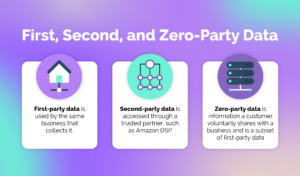
2. Contextual Advertising and Custom Algorithms
Contextual advertising platforms can identify context and provide advertisers with rich metrics for cookieless targeting.
Companies are now looking to develop new programmatic tools driven by artificial intelligence and machine learning platforms to combine contextual advertising with behavioral targeting.
These custom algorithms are based on their first-party data and work with demand-side platforms (DSPs) to customize a process that was previously one-size-fits-all.
By supplying their first-party data, advertisers can train the algorithm to deliver more highly personalized ads and improve campaign optimization.
3. Refining Connected TV (CTV) Measurement
CTV ad spending is set to increase from $14.11 billion in 2022 to $18.29 billion in 2024, according to eMarketer. Providers like Netflix, Hulu, and Disney+ (among many others) are launching ad-supported tiers. As a result, CTV ad inventory will grow in volume.
Those in the advertising industry will need to pay attention to the procurement processes, methods, and measurement of CTV ads that need to be reevaluated.
In general, CTV advertising is perceived as difficult to measure. However, with the right tech stack and integrations, CTV ads can be tracked with a precision almost equal to other digital channels.
4. The Growth of Programmatic Digital-Out-Of-Home (pDOOH)
Programmatic digital-out-of-home advertising is likely to be a big trend in the coming years. Seventy-six percent of marketers worldwide plan to increase their pDOOH budgets in 2023. In the US alone, pDOOH ad spending is projected to reach $367 million by the end of 2022, up by 15% compared to 2021.
The broad reach, the resistance to ad blockers, and the general unobtrusiveness of pDOOH ads are key factors driving their popularity.
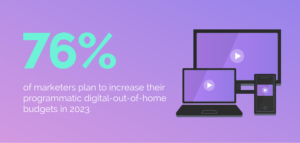
4. The Ongoing Rise of Programmatic Audio
Seventy-four percent of people report setting aside time to listen to audio content such as digital radio, audiobooks, and podcasts. Podcasts, in particular, continue to be extremely popular, with 86% of Gen Z saying they regularly listen to podcasts.
This represents an opportunity for advertisers, who can everage programmatic audio ads to reach customers even when they’re away from the screen. These types of ads are not only limited to digital audio content. Voice search is also growing in popularity — Google reports that 27% of the global population now uses voice search on mobile devices.
With the rise of smart speakers, such as Amazon’s Alexa, more voice searches are being made daily, allowing advertisers to serve relevant audio search ads and reach a wider audience.
5. The Return of QR Codes
QR code technology has been around for a while now, but since the pandemic, it has become more ubiquitous and accessible.
The QR code revival probably has a lot to do with the fact that most smartphone users can now scan a QR simply by opening their cameras. This has helped it gain traction among advertisers, who are now incorporating QR codes into their marketing strategy.
A strategically-placed QR code on or near an advert can encourage people to take action — whether it’s viewing product information on a website, making a phone call, or sending an email, SMS, or WhatsApp message — with simplicity and ease.
QR codes are especially effective in improving the performance of pDOOH and CTV ads since they allow audiences to take action in non-clickable environments. They also offer advertisers a new way to track and optimize campaigns.
Stay Ahead of the Curve in 2023
Staying on top of ad industry trends is essential for determining where your focus should be as you plan your marketing efforts for 2023.
Alternatively, you could partner with a media agency that’s at the cutting edge of digital advertising to take it off your hands.
Grapeseed Media specializes in creating data-driven, expertly crafted, and high-performing digital ad campaigns that leverage the latest industry trends and technology to deliver results.
Get in touch with us to learn more about how we can help you meet your goals in 2023 and beyond.

